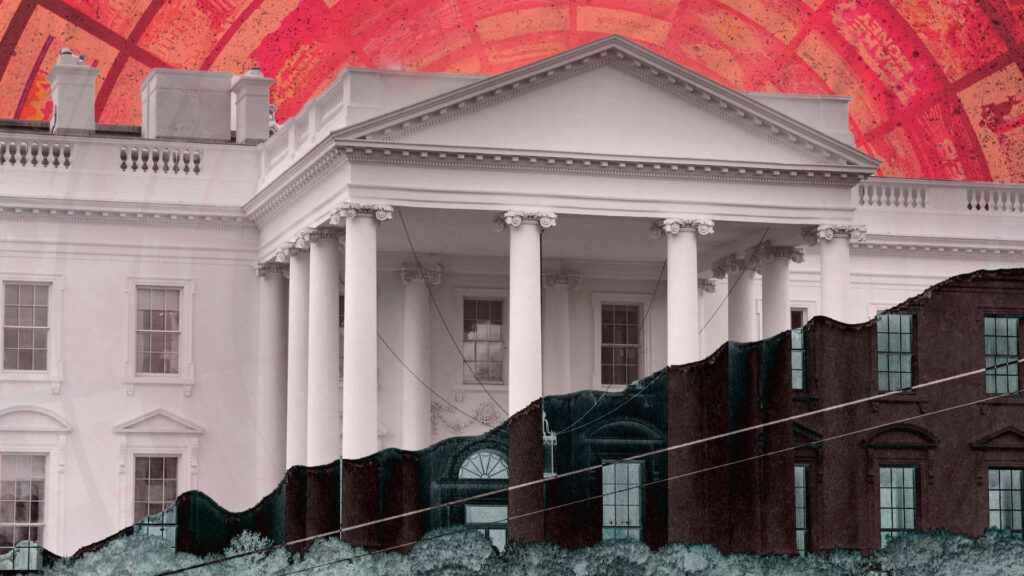It is well documented that Black students borrow more for college and have higher rates of nonpayment and default. Among college graduates, the average Black borrower has more than $7,000 in education debt compared to White graduates who borrowed. Almost half (48.7%) of Black students who borrowed for their undergraduate studies defaulted compared with a fifth (20.1%) of White student borrowers. Moreover, Black-White student loan debt disparities actually increase throughout young adulthood because White young adults are able to repay their loans more rapidly. A critical factor that explains these worse outcomes for Black students is racial disparities in parental, grandparental, and other family members’ wealth. Research finds that parental wealth is negatively associated with student loan debt accumulation for White young adults but is not associated with the amount of student debt Black borrowers accumulate. Why? Black families hold significantly less wealth than White families, and Black students generally are more inclined to pursue higher education that White students. As a result, Black students receive more years of schooling and earn more credentials than White students with similar family socioeconomic backgrounds (based on income and educational attainment of the head).
The Black-White wealth gap is staggering. White households hold more than $9 for every $1 of median net worth held by Black households. In 2017, the median wealth of White households in the top wealth quintile (upper 20%) was almost six times greater than the median wealth held by households in the top quintile of the Black wealth distribution. The median net worth of the top 20% of Black households falls short of the median for the wealthiest 40% of white households in the U.S.
Furthermore, racial differences in student loan debt account for a sizable share (13%- 23%) of Black-White differences in wealth during young adulthood. Paying down debt prevents individuals from accumulating savings at the same rate as those without debt. White adults who borrowed less for college and repay their outstanding loan amounts faster can begin to save and build wealth, while Black young adults are still repaying their loans. Plus, defaulting on debts, in particular defaulting on private loans that carry less protection and higher interest rates, can damage a person’s credit status, making future borrowing more expensive or even impossible. This also means that student loan debt may have life course repercussions with long-term intergenerational wealth effects that reinforce racial wealth inequality.
The joint accumulation of more debt and lower capacity to repay it suggest that for Black borrowers there is a student debt and repayment crisis. At the very least, a two-pronged approach is needed to address the Black student debt problem. The first prong would tackle the existing debt that disproportionately burdens Black young adults. This could be accomplished via a program of debt cancellation for all borrowers holding loan debt associated with their college years. We do not believe there should be a cap on the amount given to Black borrowers carrying more debt, on average, with balances growing over time.
The second prong would prevent a renewal of the crisis in the future. Black-White disparities in student loan debt are deeply rooted in racial wealth disparities. A lack of resources to pay for college costs means Black students need to borrow more, and debt-repayment issues highlight the persistent financial constraints that Black students face upon leaving school. Therefore, our big solution to the Black student debt crisis is to eliminate racial wealth inequality.
In a world in which college costs only will continue to rise and tuition-free college remains out of reach for most families, we propose two additional policy-based solutions focused on wealth accumulation. One is Sen. Cory Booker’s Opportunity Accounts proposal, also known as baby bonds — or a similar arrangement that provides young adults with an endowment calibrated on the basis of their parents’ resources — which could help reduce the size of the racial wealth gap. Since Black families have far lower levels of wealth than White families, resource-adjusted endowments mean that Black students would, typically, receive larger accounts. But because Opportunity Accounts max out at $50,000, a large racial disparity in wealth would remain, since the average Black-White difference in household wealth is closer to $800,000. While baby bonds could mitigate the worst excesses of racial wealth inequality, they would not come close to extinguishing the racial wealth gap.
We propose a final strategy to eliminate the racial wealth gap: a comprehensive program of reparations for Black descendants of American slavery. What is needed is to bring the Black share of ownership in the nation’s wealth from its current 2.6% to at least 13%, a proportion consistent with the Black share of the nation’s population. Reparations would attack the racial wealth gap by directly allocating financial resources in a way that brings Black and White households in line by raising the net value of Black household property by $800,000.







